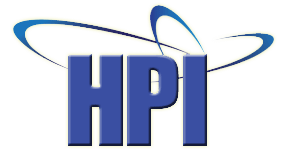So, it's time to look for a job and that means updating an existing resume or (if it's been a while) creating a new one from scratch. Here's some things to keep in mind:
Your resume should usually be kept to no more than 2 pages. One page is sufficient for many.
Now that resumes are sent almost exclusively online, have your final draft in PDF format so its format holds on every platform (HTML is also OK in some situations, but PDF is the best bet)
Professional format generally includes the following:
Header – Include full name, address (at least city of residence), mobile number, and email.
Objective – A two to four line explanation of what type of position(s) being sought. This topic may be omitted or replaced with an 'Overview' or “Key Skills” section (only use one)
Experience – Listed from most current to oldest position, going back 10 years, minimum. List company, dates employed (as specific as possible – to the month), location (city) of office, title of position, duties and any honors/recognitions received.
Skills – An area to highlight computer, systems, industry knowledge, and other topics not highlighted elsewhere.
Education – A brief listing of the highest level of education attained, where attained and in what area of concentration. Include notable industry designations and any continuing education.
*Note that the order of these topics can be altered slightly to suit the individual
Do NOT put reasons for leaving each position on the resume. That is best left to the interview process (unless there are numerous Temporary assignments. Mention Temp status for those.).
Do NOT put references on the resume. That should be a separate document that is provided upon request. Simply put “References available upon request.” on the bottom of the resume.
Preferred format is left justified. Center justification may be used, but NEVER right.
Always spell-out everything. Use no abbreviations. (Designations are ok - CISR, CIC, CPCU, etc.)
Keep format consistent throughout entire resume. Note: Do NOT use all caps. Use Bold and Italics to differentiate headings and titles.
Be careful about use of color, backgrounds, etc. You don't want to distract from the info you're trying to convey.
Using bullets instead of paragraphs in your experience and skills sections makes the information stand out when there is substantial information to relay.
Do not use a ‘fancy (ie: script) font’ as it detracts from the content and often makes it difficult to read. Stick with Arial, Times New Roman, Calibri, or other more common Font selections.
Use 10 or 12 point font size. Anything smaller can be difficult to read and anything larger looks like you are simply filling space.
Use spell check on the computer, proofread, then proofread again, then have at least one other person proofread for spelling, grammar, and punctuation.
These are all suggestions of what makes a visually attractive resume. Of course, your experience is the most important aspect of the resume, and the goal is to make your resume stand out. Organize the resume to what best fits your personality and style making sure that it will also appeal to others.
Good Luck!

